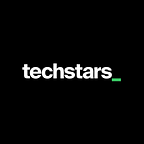Building an Innovation Ecosystem in the Heartland
by Wendy Lea, Techstars Board Member
How do you build an innovation ecosystem in the heartland? There’s no simple answer.
Some say you need to have an active startup community, others focus their innovation efforts with research institutions, and then there are some who put all their chips in the corporate innovation corner, depending on patterns of digital disruption within specific industries in their cities and regions.
Regardless of your starting point, I see the buildout of an innovation ecosystem as a complex but elegant series of interactions amongst interdependent communities of corporations, universities, investors, local government, and economic development groups — with the center of the universe being a startup community. Each piece in the ecosystem is dependent on the others.
Yes, it’s complicated.
When was the last time you watched a Rube Goldberg machine? Did you build one in high school? Or see this cool music video? What about an intricate one in a museum?
Everyone’s familiar with the concept: combine dozens (sometimes hundreds) of different, complex structures and bind them all together to reach a single outcome.
When I find myself explaining our body of work at Cintrifuse, I sometimes feel like I’m describing one of these contraptions. What steps do you have to follow to plug a fresh-faced startup into a 150-year-old corporation? Or a Midwestern university into a West Coast venture capital fund? Then, after you construct this elaborate machine, what’s the result? How do you measure it? Did the rocket launch? Did you feed the dog? Answer the doorbell? Even if you built a better mousetrap, did it catch a mouse?
More important than the outcome of the Rube Goldberg machine is the need for connective tissue movement — where each part of the system is tending to each other’s needs in this case for talent and digital innovation. In the early days, it’s a forced connection.It’s not just about the domino that falls into a cup of milk at the end, it’s about the journey of the ball before that, and the see-saw before that, and the spring, the buzzer, the hammer, etc.
Take ten steps back from the Rube Goldberg, and you see a wall (or a room) alive with motion, activity, and something active and exciting. That’s how I picture a city filled with economic vibrancy. It’s not static, single-threaded or sequestered. A vibrant city is intertwined, dependent on every other piece part, and a spectacle of movement.
What role do entrepreneurs play??
Entrepreneurs must lead startup communities, but they alone aren’t enough to make an innovation ecosystem.
With entrepreneurs as the driving force, you get an independent collection of like-minded people experimenting with the significant problems a city (or industry) faces. They start small but build as they’re able. This shared perspective and passion — a willingness to risk and fail — is what makes a collection of entrepreneurs unique. They are eager to change, even disrupt, the status quo.
However, startup founders often lack insight into regional economic development organizations. They often have limited knowledge about their region’s chamber of commerce, its City Hall, or the global organizations they share the same area code with. Nonetheless, entrepreneurs need these more traditional mechanisms of growth, the levers cities use to propel themselves forward.
Building an Innovation Ecosystem
An Innovation Ecosystem incorporates/includes startups and also universities that supply talent, BigCos that supply customers and expertise, investors, mentors, failed startups, relationships with other regions, and MORE.
Think back to the Rube Goldberg machine. We have dozens of juxtaposed community mechanisms. I see startups themselves as the ones that tip the first domino. That’s where the chain reaction starts and, also, where it ends. Who’s going to benefit from this churning, buzzing, blinking ecosystem? The entrepreneur is also there to catch the final ball. That’s because startups have the tools necessary to enable the connective tissue that binds together the entire region — talent and innovation.
Speaking from a Greater Cincinnati perspective, that’s one of the reasons Cintrifuse was created — a tool to empower entrepreneurs, to encourage innovation throughout the ecosystem, and to make sure that talent was flowing to every corner.
So the next time you see a metaphorical (or real) Rube Goldberg machine, take a few steps back and realize how critical every piece part is to the whole. It’s easy to see the first and the last steps; what sets the machine in motion and what result culminates at the end. However, pay close attention to the myriad events that connect reaction to reaction — the ECOSYSTEM that enables both the cause AND the effect.
